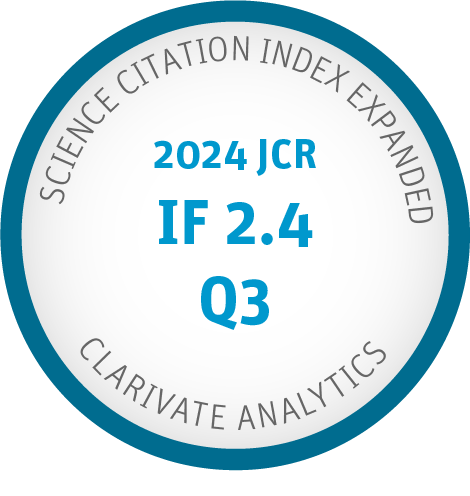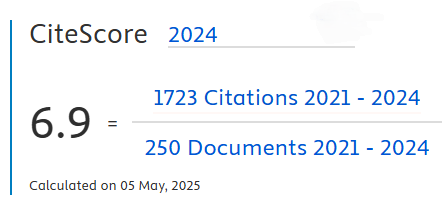Identification of Monkeypox Disease Based on MpoxNet and Swin Transformer Models Using Mobile Application
DOI:
https://doi.org/10.9781/ijimai.2024.11.001Keywords:
Mobile Application, Monkeypox, Swin Transformer, Skin Lesion Images, Transfer LearningAbstract
Humankind is still reeling from the devastating impact of the Covid-19 pandemic, yet another looming threatis the potential global spread of the monkeypox virus. While monkeypox may not pose the same level of lethality or contagion as COVID-19, its significant spread across countries is cause for concern. Already, outbreaks have been reported in 75 nations worldwide. Despite sharing clinical characteristics with smallpox, including lesions and rashes, monkeypox symptoms are frequently mistaken for those of other poxviruses such as chickenpox and cowpox. Consequently, accurate early diagnosis of monkeypox by healthcare professionals remains challenging. Automated monkeypox identification using Deep Learning (DL) techniques presents a promising avenue for addressing this challenge. In this study, a modified deep convolutional neural network (DCNN) model named MpoxNet is proposed for the identification of monkeypox disease. The performance of MpoxNet is evaluated against established DCNN models, including ResNet50, VGG16, VGG19, DenseNet121, DenseNet169, Xception, InceptionResNetV2, and MobileNetV2. This study addresses the pressing challenge of monkeypox identification by proposing MpoxNet. With the aim of enhancing early detection and containment efforts, MpoxNet's performance is evaluated against established DCNN models across two distinct datasets: MSLD and MSID Dataset. Results reveal MpoxNet's superior test accuracy of 94.82% on the MSLD Dataset, surpassing other models. However, evaluation on the MSID Dataset highlights variations in performance, emphasizing the influence of dataset characteristics. Additionally, the introduction of the Swin Transformer model demonstrates exceptional performance on the MSLD and the MSID Dataset and, achieving an accuracy of 98%. These findings underscore the importance of considering diverse datasets and leveraging advanced techniques for robust monkeypox detection systems. Integration of MpoxNet with a mobile application offers a promising solution for rapid and precise monkeypox disease detection, providing valuable insights for future research and real-world deployment strategies to effectively combat the global spread of monkeypox.
Downloads
References
The World Health Network Declares Monkeypox a Pandemic – Press —June 22, 2022. Accessed: [Online]. Available: https://www.worldhealthnetwork.global/monkeypoxpressrelease.
WHO, “Monkeypox Fact Sheet,” 2024. Accessed: [Online]. Available: https://www.who.int/news-room/fact-sheets/detail/monkeypox.
S. N. Ali et al., “Monkeypox skin lesion detection using deep learning models: A preliminary feasibility study,” arXiv preprint arXiv:2207.03342, 2022.
E. Alakunle, U. Moens, G. Nchinda, and M. I. Okeke, “Monkeypox virus in Nigeria: infection biology, epidemiology, and evolution,” Viruses, vol. 12, no. 11, p. 1257, 2020.
M. Moore and F. Zahra, “Monkeypox,” in StatPearls [Internet], StatPearls Publishing, 2021.
L. D. Nolen, L. Osadebe, J. Katomba, J. Likofata, D. Mukadi, B. Monroe, and M. G. Reynolds, “Extended human-to-human transmission during a monkeypox outbreak in the Democratic Republic of the Congo,” Emerging Infectious Diseases, vol. 22, no. 6, pp. 1014, 2016.
P. Y. Nguyen, W. S. Ajisegiri, V. Costantino, A. A. Chughtai, and C. R. MacIntyre, “Reemergence of human monkeypox and declining population immunity in the context of urbanization, Nigeria, 2017–2020,” Emerging Infectious Diseases, vol. 27, no. 4, pp. 1007, 2021.
Q. Gong, C. Wang, X. Chuai, and S. Chiu, “Monkeypox virus: a re-emergent threat to humans,” Virologica Sinica, 2022.
T. Islam, M. A. Hussain, F. U. H. Chowdhury, and B. R. Islam, “Can artificial intelligence detect monkeypox from digital skin images?” bioRxiv, 2022.
J. Sun, L. Peng, T. Li, D. Adila, Z. Zaiman, G. B. Melton-Meaux, and C. J. Tignanelli, “Performance of a chest radiograph AI diagnostic tool for COVID-19: A prospective observational study,” Radiology: Artificial Intelligence, vol. 4, no. 4, pp. e210217, 2022.
A. Akbarimajd, N. Hoertel, M. A. Hussain, A. A. Neshat, M. Marhamati, M. Bakhtoor, and M. Momeny, “Learning-to-augment incorporated noise-robust deep CNN for detection of COVID-19 in noisy X-ray images,” Journal of Computational Science, vol. 63, p. 101763, 2022.
M. Momeny, A. A. Neshat, M. A. Hussain, S. Kia, M. Marhamati, A. Jahanbakhshi, and G. Hamarneh, “Learning-to-augment strategy using noisy and denoised data: Improving generalizability of deep CNN for the detection of COVID-19 in X-ray images,” Computers in Biology and Medicine, vol. 136, p. 104704, 2021.
J. Liu, N. Dey, N. Das, R. González Crespo, F. Shi, and C. Liu, “Brain fMRI segmentation under emotion stimuli incorporating attention-based deep convolutional neural networks,” Applied Soft Computing, vol. 122, p. 108837, 2022.
S. Kadry, E. Herrera-Viedma, R. González Crespo, S. Krishnamoorthy, and V. Rajinikanth, “Automatic detection of lung nodule in CT scan slices using CNN segmentation schemes: A study,” Procedia Computer Science, vol. 218, pp. 2786-2794, 2023.
N. Gessert, T. Sentker, F. Madesta, R. Schmitz, H. Kniep, I. Baltruschat, and A. Schlaefer, “Skin lesion classification using CNNs with patch-based attention and diagnosis-guided loss weighting,” IEEE Transactions on Biomedical Engineering, vol. 67, no. 2, pp. 495-503, 2019.
J. Kawahara, A. BenTaieb, and G. Hamarneh, “Deep features to classify skin lesions,” in 2016 IEEE 13th International Symposium on Biomedical Imaging (ISBI), Prague, Czech Republic, 2016, pp. 1397-1400.
E. H. Mohamed and W. H. El-Behaidy, “Enhanced skin lesions classification using deep convolutional networks,” in 2019 Ninth International Conference on Intelligent Computing and Information Systems (ICICIS), Cairo, Egypt, 2019, pp. 180-188.
M. A. Al-Masni, D. H. Kim, and T. S. Kim, “Multiple skin lesions diagnostics via integrated deep convolutional networks for segmentation and classification,” Computer Methods and Programs in Biomedicine, vol. 190, p. 105351, 2020.
S. Jinnai, N. Yamazaki, Y. Hirano, Y. Sugawara, Y. Ohe, and R. Hamamoto, “The development of a skin cancer classification system for pigmented skin lesions using deep learning,” Biomolecules, vol. 10, no. 8, p. 1123, 2020.
W. Sae-Lim, W. Wettayaprasit, and P. Aiyarak, “Convolutional neural networks using MobileNet for skin lesion classification,” in 2019 16th International Joint Conference on Computer Science and Software Engineering (JCSSE), Chonburi, Thailand, 2019, pp. 242-247.
S. S. Chaturvedi, K. Gupta, and P. S. Prasad, “Skin lesion analyser: an efficient seven-way multi-class skin cancer classification using MobileNet,” in International Conference on Advanced Machine Learning Technologies and Applications, Springer, Singapore, 2020, pp. 165-176.
Harangi, B., Baran, A., & Hajdu, A. (2018, July). Classification of skin lesions using an ensemble of deep neural networks. In 2018 40th annual international conference of the IEEE engineering in medicine and biology society (EMBC) (pp. 2575-2578). IEEE.
J. Steppan and S. Hanke, “Analysis of skin lesion images with deep learning,” arXiv preprint arXiv:2101.03814, 2021.
P. Tschandl, C. Rosendahl, and H. Kittler, “The HAM10000 dataset, a large collection of multi-sources dermatoscopic images of common pigmented skin lesions,” Scientific Data, vol. 5, no. 1, pp. 1-9, 2018.
N. C. Codella, D. Gutman, M. E. Celebi, B. Helba, M. A. Marchetti, S. W. Dusza, and A. Halpern, “Skin lesion analysis toward melanoma detection: A challenge at the 2017 international symposium on biomedical imaging (ISBI), hosted by the international skin imaging collaboration (ISIC),” in 2018 IEEE 15th International Symposium on Biomedical Imaging (ISBI 2018), Washington, DC, USA, 2018, pp. 168-172.
M. Combalia, N. C. Codella, V. Rotemberg, B. Helba, V. Vilaplana, O. Reiter, and J. Malvehy, “Bcn20000: Dermoscopic lesions in the wild,” arXiv preprint arXiv:1908.02288, 2019.
T. Hu, M. Khishe, M. Mohammadi, G.-R. Parvizi, S. H. Taher Karim, and T. A. Rashid, “Real-time COVID-19 diagnosis from X-Ray images using deep CNN and extreme learning machines stabilized by chimp optimization algorithm,” Biomedical Signal Processing and Control, vol. 68, Article 102764, 2021.
H. Sharma, J. S. Jain, P. Bansal, and S. Gupta, “Feature extraction and classification of chest X-Ray images using CNN to detect pneumonia,” in 2020 10th International Conference on Cloud Computing, Data Science & Engineering (Confluence), Noida, India, 2020, pp. 227–231.
M. Heidari, S. Mirniaharikandehei, A. Z. Khuzani, G. Danala, Y. Qiu, and B. Zheng, “Improving the performance of CNN to predict the likelihood of COVID-19 using chest X-ray images with preprocessing algorithms,” International Journal of Medical Informatics, vol. 144, p. 104284, 2020.
M. V. Madhavan, A. Khamparia, D. Gupta, S. Pande, P. Tiwari, and M. S. Hossain, “Res-CovNet: An internet of medical health things driven COVID-19 framework using transfer learning,” Neural Computing and Applications, pp. 1–14, 2021.
R. Sandeep, K. Vishal, M. Shamanth, and K. Chethan, “Diagnosis of visible diseases using CNNs,” in Proceedings of International Conference on Communication and Artificial Intelligence, Springer, 2022, pp. 459–468.
K. Glock, C. Napier, T. Gary, V. Gupta, J. Gigante, W. Schaffner, and Q. Wang, “Measles rash identification using transfer learning and deep convolutional neural networks,” in 2021 IEEE International Conference on Big Data (Big Data), Orlando, FL, USA, 2021, pp. 3905–3910.
M. M. Ahsan, M. R. Uddin, M. Farjana, A. N. Sakib, K. A. Momin, and S. A. Luna, “Image data collection and implementation of deep learning-based model in detecting monkeypox disease using modified VGG16,” arXiv preprint arXiv:2206.01862, 2022.
C. Sitaula and T. B. Shahi, “Monkeypox virus detection using pre-trained deep learning-based approaches,” Journal of Medical Systems, vol. 46, no. 11, pp. 1-9, 2022.
V. Kumar, “Analysis of CNN features with multiple machine learning classifiers in diagnosis of monkeypox from digital skin images,” medRxiv, 2022. [CrossRef].
S. Maqsood and R. Damaševičius, “Monkeypox detection and classification using deep learning-based features selection and fusion approach,” in 2023 IEEE International Systems Conference (SysCon), Vancouver, BC, Canada, 2023, pp. 1-8.
M. Hussain, M. A. Khan, R. Damaševičius, A. Alasiry, M. Marzougui, M. Alhaisoni, and A. Masood, “SkinNet-INIO: multiclass skin lesion localization and classification using fusion-assisted deep neural networks and improved nature-inspired optimization algorithm,” Diagnostics, vol. 13, no. 18, p. 2869, 2023.
S. N. Ali, M. Ahmed, J. Paul, T. Jahan, S. M. Sani, N. Noor, and T. Hasan, “Monkeypox skin lesion detection using deep learning models: A feasibility study,” arXiv preprint arXiv:2207.03342, 2022.
A. G. Howard, M. Zhu, B. Chen, D. Kalenichenko, W. Wang, T. Weyand, ... and H. Adam, “Mobilenets: Efficient convolutional neural networks for mobile vision applications,” arXiv preprint arXiv:1704.04861, 2017.
D. Bala and M. S. Hossain, “Monkeypox Skin Images Dataset (MSID),” Mendeley Data, V6, 2023. doi: 10.17632/r9bfpnvyxr.6.
K. He, X. Zhang, S. Ren, and J. Sun, “Deep residual learning for image recognition,” in Proceedings of the IEEE Conference on Computer Vision and Pattern Recognition, Las Vegas, NV, USA, 2016, pp. 770-778.
K. Simonyan and A. Zisserman, “Very deep convolutional networks for large-scale image recognition,” arXiv preprint arXiv:1409.1556, 2014.
M. Sandler, A. Howard, M. Zhu, A. Zhmoginov, and L. C. Chen, “Mobilenetv2: Inverted residuals and linear bottlenecks,” in Proceedings of the IEEE Conference on Computer Vision and Pattern Recognition, 2018, pp. 4510-4520.
G. Huang, Z. Liu, L. van der Maaten, and K. Q. Weinberger, “Densely connected convolutional networks”, in Proceedings of the IEEE Conference on Computer Vision and Pattern Recognition (CVPR), 2017, pp. 2261-2269.
F. Chollet, “Xception: Deep learning with depthwise separable convolutions,” in Proceedings of the IEEE Conference on Computer Vision and Pattern Recognition, 2017, pp. 1251-1258.
C. Szegedy, V. Vanhoucke, S. Ioffe, J. Shlens, and Z. Wojna, “Rethinking the inception architecture for computer vision,” in Proceedings of the IEEE Conference on Computer Vision and Pattern Recognition, 2016, pp. 2818-2826.
P. Pandiyan, R. Thangaraj, M. Subramanian, R. Rahul, M. Nishanth, and I. Palanisamy, “Real-time monitoring of social distancing with person marking and tracking system using YOLO V3 model,” International Journal of Sensor Networks, vol. 38, no. 3, pp. 154-165, 2022.
Downloads
Published
-
Abstract52
-
PDF18








